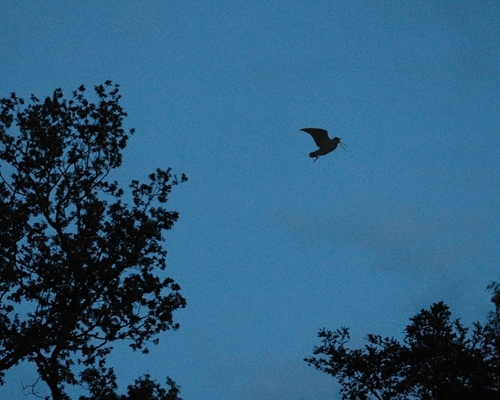Though the Eurasian woodcock is migratory across most of its range, there are several smaller resident populations that do not migrate. This includes a small but widespread breeding population native to the UK. Woodcock can be found throughout the country with the only notable exceptions being on the highest ground in parts of Scotland, and in south-west England and south Wales.
In the UK, woodcock breed from early March until July, with egg-laying peaking between mid-March and mid-April. A wide range of woodland types may be used, but there appears to be some preference towards more mature woodland with a diverse range of tree species. Certain ground flora species seem to be preferred when selecting nest sites, particularly bramble (Rubus fruticosus) and dog’s mercury (Mercurialis perennis).

Male woodcock may begin displaying as early as the end of February and continue throughout the breeding season. The ‘roding’ display involves a repeated two-part call that is uttered in flight and consists of a high nasal whistle interspersed with a series of low grunts. Until the late 1970s, it was believed that the roding calls were territorial warnings to other males, but Game Conservancy Trust research, conducted by Dr Graham Hirons during the late 1970s and 1980s, proved that this is not the case. Radio-tracking of male woodcock showed revealed a polygynous mating system, whereby a dominant male may mate with up to four females in a breeding season, and male’s roding circuits overlapped as rivals competed in a lek-like system.

The female nests on the ground and the clutch of typically four eggs is incubated for 21 to 24 days. She will lead her offspring away from the nest within a few hours of hatching but they will be dependent on her for the next 15-20 days.
As a British breeding bird, the species is currently ‘red-listed’ as a bird of conservation concern due to an apparent long-term decline in breeding range. Because of this, research into the breeding ecology of our resident woodcock has become a matter of particular importance. The GWCT conducted dedicated surveys of breeding woodcock in 2003, 2013 and 2023, and we intend to continue and expand on this research to look at long-term trends in the British population and identify the drivers of decline.